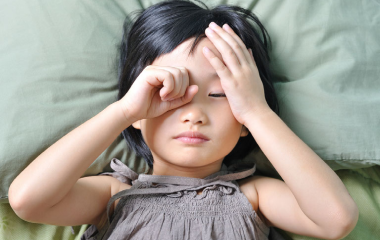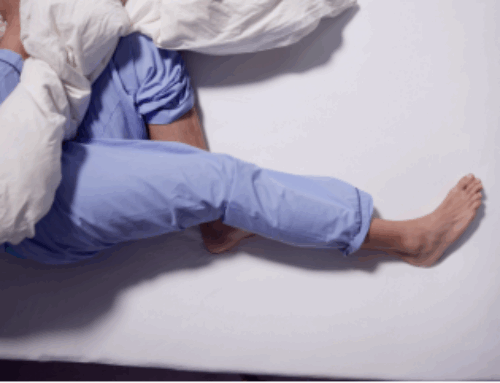Sleep problems are common among children. While some sleep problems may go away as a child grows and develops, other ongoing problems may be a sign of a sleep disorder. In fact, recent research suggests that childhood sleep problems may predict sleep problems in adulthood.
Does my child have a sleep problem?
Up to 50% of all children may experience a sleep problem, but a much smaller percentage of children have a formal sleep disorder diagnosis.
Sleep disorders prevent children from getting the healthy sleep that they need. Children who don’t sleep well can be tired and cranky during the day. They also can have behavioral problems.
Common childhood sleep disorders include:
- Difficulty falling asleep and problems sleeping through the night: At one time or another, most children have trouble sleeping through the night. It’s more concerning if the problem becomes a nightly pattern or if it has a negative effect on your child during the day.
- Obstructive sleep apnea: Many children may snore when they have a cold or allergies. Nightly snoring may be a sign of obstructive sleep apnea. It can be caused by a deviated nasal septum or enlarged tonsils and adenoids. Other features that can be present include open-mouth breathing, sweating during sleep, or restless, fragmented sleep. In some children, you may observe periods of snoring followed by long, silent pauses between breaths.
- Restless legs syndrome: Children may complain that they have a creepy-crawly, tugging, itchy or tingly sensation in their legs when they try to sleep. Younger children who may not be able to describe these symptoms may prompt you to massage or rub their legs to go to sleep. Symptoms of restless legs syndrome tend to improve with walking or stretching.
- Nightmares: It’s normal for a child to be frightened by a vivid dream. However, frequent nightmares are much less common. Nightmares become a problem if they cause anxiety, distress, or bedtime resistance.
- Sleepwalking: It’s common for children to sleepwalk. They usually stop sleepwalking by the time they become a teen. Sleepwalking can be dangerous if your child uses stairs or appliances, or leaves the house.
- Bedwetting: Children who are under the age of 5 often wet the bed. Bedwetting is considered a sleep disorder if your child is older than 5 years and has episodes at least twice a week. Some children may begin to wet the bed during periods of emotional distress.
A sleep disorder can cause problems for your child’s daytime alertness, mood, school performance, and safety.
The good news? Treating a sleep disorder may prevent or minimize its negative effects on development, health, mood, and performance.
How much sleep do children need?
The most common sleep problem in children is a lack of adequate sleep time. Younger children require the longest sleep duration. Children require less sleep as they age.
How much sleep do kids and teens need? The AASM recommends:
- Infants 4-12 months old: 12-16 hours (including naps)
- Children 1-2 years old: 11-14 hours (including naps)
- Children 3-5 years old: 10-13 hours (including naps)
- Children 6-12 years old: 9-12 hours
- Teens 13-18 years old: 8-10 hours
Children who have inconsistent sleep schedules are more likely to have sleep problems. Use the AASM’s bedtime calculator to find the best bedtime for your child based on their wake time.
Healthy sleep requires adequate sleep duration, good quality, appropriate timing, regularity, and the absence of sleep disorders.
How can I improve my child’s sleep?
Help your child develop healthy sleep habits. Set a regular bedtime, develop a relaxing bedtime routine to help your child settle down for the night, and set a “technology curfew” to limit the use of electronics in the evening.
Talk to your child’s doctor about any ongoing sleep problems. The doctor will help find and treat any underlying causes of your child’s sleep problem.
Medical review by Anne Marie Morse, DO, FAASM
Related:
Authored by:
Kate Robards





